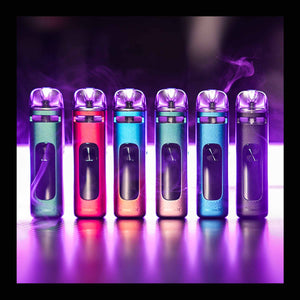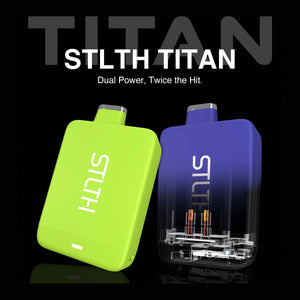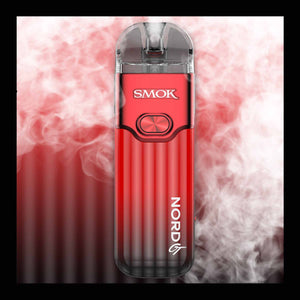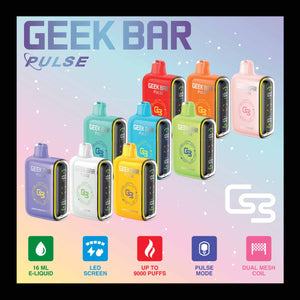Summary of Key Points
- Vaping and smoking both have associated risks, but smoking traditional cigarettes exposes the user to over 7,000 toxins, including 70 carcinogens. Vaping eliminates tobacco and combustion, reducing exposure to these harmful substances.
- Vaping is not without risks; heating Propylene Glycol in e-liquids can release formaldehyde gas, and some flavoring chemicals can be harmful. However, vaping products vary widely, and careful selection can mitigate these risks.
- Smoke from cigarettes consists of tiny harmful particles that can cause various diseases, including cancer, emphysema, and lung disease. Vaping does not produce such smoke, which helps reduce these risks.
- Smoking presents fire risks, while vaping used to raise concerns about exploding batteries—although advances in technology have made this far less likely.
- Financially, vaping is significantly cheaper than smoking due to the high taxes on traditional cigarettes.
Vaping vs. Smoking
You’ve probably already heard a lot about this topic. E-cigarettes are said to be significantly healthier than traditional cigarettes, making them an enticing alternative for many smokers. However, many critics complain about the health risks of this electronic alternative, and much of the information available is hearsay and conjecture. So how do we determine which is actually better? In this article we will be looking at hard facts to determine whether vaping is a viable alternative to smoking and, above all, why.
To many people, e-cigarettes are just considered healthier than cigarettes, period. Just the fact that no tobacco is burned, but instead nicotine is taken in with the help of vapor, already gives a much healthier impression. But is that necessarily true? In particular, it should be considered that the technology behind vaping is still very young and has been on the market for just under a decade. Since then, more and more consumers have switched to e-cigarettes but cigarettes still hold the lions’s share of the market. This is partly due to lack of knowledge; most people do not know much about e-cigarettes.
The relative lack of data and research certainly doesn’t help stop dangerous rumour and hearsay and most of the information circulating among critics still largely consists of guesses. For the people who are thinking about switching from cigarettes to e-cigarettes right now, it is important to present the facts in an unbiased way. For this we would like to start with the content in cigarette smoke versus vapor, and take a closer look at the existing chemicals. Based on this, we come to the realistic health risks that come from them. We’ll also be doing a cost comparison, which should also be of interest to many smokers.
Chemicals in Smoke and Vapor
One thing is very clear: if you consume smoke or vapor and absorb it via the lungs, it naturally has some effects on your own health. With smoking, these effects are very well researched, simply because the cigarette has long been part of society. As vaping has only been around for the last decade or so, there is less research available, but the contents in vape juice have been used for much longer, giving us some insight into these as well.

Smoking
When tobacco is burned, the combustion process yields many chemicals, of which at least seventy are carcinogenic, meaning they can cause cancer. In addition to those produced by combustion, conventional cigarettes also contain over 7000 toxins - even before you light it. Some of the most well-known of these chemicals are:
- Nicotine is the most addictive of the chemicals in cigarettes, fueling the desire for more consumption. Thus, addiction to cigarettes is usually a nicotine dependence. However, many smokers also develop the physical habits involved with smoking, such as reaching for one after a meal or while drinking, the motion of putting something to their mouth, and even just having the pack in their pocket can be necessary to satisfy the addiction.
- Hydrogen cyanide, also known as hydrocyanic acid, is a chemical that has a lethal effect and has been used in pure form, for example, for executions, as a biocide or as a weapon, and is still in use today. Formaldehyde is used primarily for preservation or disinfection. This is the stuff that your grade 10 biology frogs were stored in.
- Lead is a heavy metal that settles upon ingestion in the body, meaning it stays in your system, and acts as a toxin. Also, if it’s used in the production of billions of cigarettes worldwide, the factor of environmental impact needs to be considered.
- Arsenic is highly toxic to humans, and evidence is mounting that it also causes DNA mutations.
- Ammonia, although used for fertilization, is toxic and corrosive to mucous membranes. As an example of its toxicity, ammonia is responsible for nearly half of all deaths from air pollution in Germany.
- Nitrosamine has been shown to have a strong carcinogenic effect in almost all test cases. Nitrosamines can cause DNA damage, cell death and have been associated with insulin resistance.
Vaping
Vaping completely eliminates tobacco and the need for incineration, which removes the majority of the previously named chemicals and toxins. At this point, many people conclude that vaping is safer than smoking, but there are chemicals in vaping as well.
- Propylene Glycol, when heated above a certain temperature, releases formaldehyde gas. The higher the temperature, the more gas is released. Thus, when vaping at high voltages, there is significantly more formaldehyde produced. At low voltages, no formaldehyde was present. This study also used e-liquid that contained approximately 95% Propylene Glycol, whereas most e-liquid today is 70% or lower. The voltage range in the study was 3.2 to 5.5 volts, so it must be presumed that “higher voltage” means closer to 5.5, and “lower voltage” is likely under 4 volts.
- Diacetyl is the chemical responsible for “Popcorn Lung.” Although some companies use it in certain flavours, juice made in North America contains no diacetyl. This suggests that you may want to ensure your e-liquid is made in North America to be sure it’s clean.
In addition to these, it must be noted that there are over 7000 e-liquids available, and the ingredients vary widely. Studies indicate that more ingredients generally equals more toxins, and certain chemicals used in some flavours have been shown to be harmful to human skin cells. Compounds such as Vanillin and Cinnamaldehyde are chemical versions of flavours and have been shown to be highly toxic to humans.

Other Risk Factors
Smoke
Smoke itself is a physical thing, consisting of millions of tiny particles of burned carbon and chemicals. These stick to your lungs and form deposits that clog the lungs and act as a toxin. The results have long been documented: cancer, emphysema, lung disease, the list goes on. As well, smoking indoors means everyone in the room has to breathe this smoke. There are many cases of people developing lung cancer from the air at home or their place of work, even if they have never smoked a single cigarette. In response to the risks, regulations have been put in place to prevent people from smoking in public, but the risks are still present.
Fire
The fact that smoking involves flame and burning of tobacco, there is the risk of a cigarette continuing to smoulder after being “put out.” This leads annually to many, sometimes devastating fires, which are not only harmful to the environment, but repeatedly cause deaths.
Exploding Batteries
Especially in the early years of the e-cigarette and the first model, the danger posed by exploding batteries was very high. It is still not clear what was the cause, although probably synonymous impermissible mods served as a trigger. However, since 2007, there have not even been 300 reports of e-cigarette explosions, of which just under half resulted in injuries. Compared with the thousands of fires that are triggered by cigarettes every year, this is always negligible, especially as the battery problems continue to decline each year and the technology is constantly being improved.
The Cost Factor
E-cigarettes have one major advantage over traditional cigarettes: cost. In an attempt to get people to quit smoking, without passing any laws or regulations, the government has simply raised the taxes on cigarettes. In the last 30 years, cigarette prices have risen from $2.50 per pack to about ten times that amount. Someone who smokes a half-pack per day can expect to spend over $250 per month on cigarettes. With vaping, that cost is significantly reduced. Entry level models can cost less than a pack of cigarettes. E-juice, depending on usage, can range from pennies a day to a few dollars, but is cheaper than cigarettes in every case.
Evaluation
Frequently Asked Questions about Vaping vs. Smoking
Are all e-liquids potentially harmful?
No, the harm potential varies with ingredients. For example, e-liquids approved for sale in North America do not contain diacetyl, which is one of the most harmful chemicals associated with vaping. Buying from reputable sources like U Vape is the best way to avoid harmful chemicals in your e-liquid.
How real are the risks of formaldehyde exposure from vaping?
Formaldehyde risks are associated with heating Propylene Glycol at high voltages. Using lower voltage settings and e-liquids with lower Propylene Glycol content can mitigate this risk.
Is vaping more dangerous than smoking cigarettes?
The risks associated with vape batteries potentially exploding are significantly lower than the fire risks from cigarettes. There have been fewer than 300 reported instances since 2007, and technological improvements continue to reduce this risk.
How harmful is secondhand smoke from vaping compared to cigarettes?
Vaping does not produce the same harmful smoke as traditional cigarettes, which reduces the risk of harm from secondhand exposure. However, it’s always best to vape in designated areas to minimize exposure to others who may not appreciate being exposed to vape smoke.
If vaping is less harmful and more affordable, why do cigarettes still dominate the market?
Cigarettes have been around for much longer, and there’s a lack of knowledge and some misconceptions about e-cigarettes. Public perceptions and habits also play a significant role in market dominance.
How can I keep my vaping as safe as possible?
- Choose e-liquids carefully, considering the ingredients and buying from reputable sources like U Vape.
- Use devices at lower voltage settings and avoid chain vaping.
- Maintain your equipment properly and only charge your device with the supplied charger.
- Stay informed about the latest research and regulations on vaping products.













